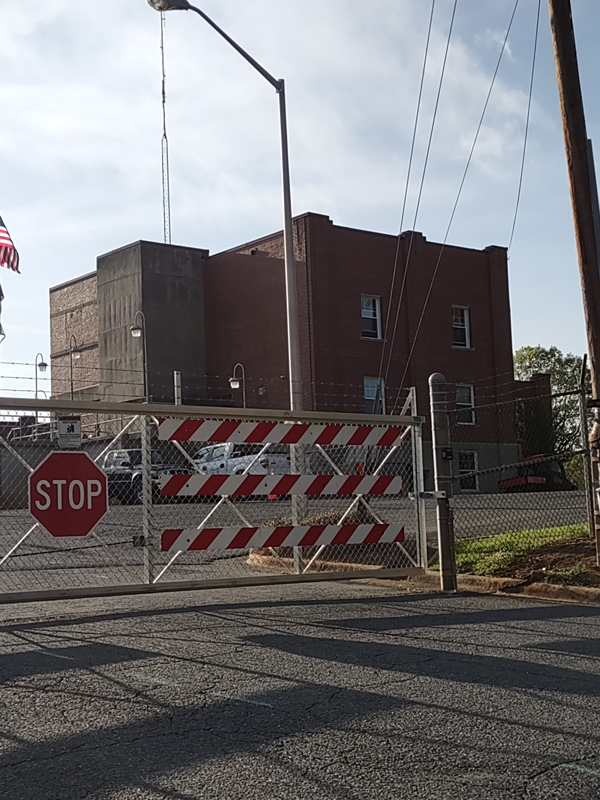Welcome!

The Asheboro Water Plant has plenty of capacity. Now it just needs more customers. (Larry Penkava / Randolph Hub)
Lack of customers could mean higher Asheboro water rates
ASHEBORO — The City of Asheboro has a water problem: There’s plenty of water, but not enough customers.
The end result of that problem could be higher water rates for customers.
City Manager John Ogburn addressed the water situation recently, saying Asheboro is facing the same issue as other historically textile-based towns in North Carolina. The city was built around textile mills with their thirsty dye houses.
“Now there’s only one left — Bossong,” he said. “Our largest industrial customers over time have closed or moved offshore.”
Those industries include Champagne Dye Works and Sara Lee Hosiery, which were major users of city water.
“Textiles once carried all the financial load, disproportionately,” Ogburn said, explaining that homeowners, apartment residents and offices don’t use nearly the amount of water as the old mills, and thus don’t make up for the revenues once paid by those lost textile industries.
At the same time, Ogburn said, the system has to be maintained. “Today, with inflation at 5 or 6 percent and gas at $3.75 a gallon, it means our operating costs are rising.” He listed the inflationary pressures on wages, supplies and chemicals used in treating water. And prices increase because of rising transportation costs.
“Randolph County has a 3.3 percent unemployment rate, driving up wages,” he said. “And other governments ‘poach’ our employees. All the things that make Asheboro great also make us vulnerable in a tight market.
“All this comes at a time when we have an aging system,” Ogburn said. “Pump No. 3 has to be upsized and relocated. The raw water intake at Lake Lucas is broken, but it worked for 70 years. We’re running off Lake Reese, which is costing $10,000 a month more just in electrical costs.
“Fixed costs are what they are, no matter how many customers you have,” he said. “When you lose large industrial customers, you lose the volume of water you make while the fixed costs are the same.”
Ogburn likened the water situation with a public golf course. It has a clubhouse, 18 tee boxes, 18 fairways, 18 greens, a parking lot and golf carts. He said the management’s debt and maintenance costs remain the same no matter how many golfers come to play.
“The objective is to get as many golfers as possible,” Ogburn said. If the number of golfers drops from 100 to 50, say, then management is forced to raise fees to the golfers.
“We’ll continue to make improvements and recruit large water users,” he said. And also to “lock in” the Seagrove/Ulah Water District as well as the City of Randleman. Asheboro also would like to sell water to Ramseur/Franklinville, which are experiencing the same problems, especially since the closure of Ramtex.
Asheboro is also working with the Randolph County Economic Development Corporation, Randleman and Randolph County government to recruit an industry at a potential industrial site at I-74 and Wall Brothers Road near Sophia. Randleman would provide the water while Asheboro would take care of the sewer.
With Toyota Battery at Liberty, Boom jets in Greensboro and Vinfast automobile manufacturing coming to Chatham County, Ogburn can see more industry on the horizon to use Asheboro water. But will it be enough?
“The issue in trying to recruit ‘wet industry’ is they’re located where the raw material is,” Ogburn said. “We have raw water capacity in our lakes, plenty of treatment capacity, plenty of storage capacity. We just need more customers, bigger customers — or rate increases.
“Demand for water is high across the state,” he said. “A family of four pays about $80 a month for water and sewer service. Asheboro’s rates are historically low compared to other North Carolina cities.
“Regulators tell us to raise our rates,” Ogburn said. “It’s been five or more years since our last increase.
“As a public utility, our citizens own the system, but we don’t give dividends to the owners — such as Duke Energy, which gives dividends to shareholders.
But there are dividends from the water system, Ogburn said: “Economic development, quality of life and public health are our dividends — a clean public water supply.
“We charge $2.77 for 750 gallons and deliver it to you,” he said. “We work hard at water quality. The objective is to have crystal clear, odorless, tasteless water. We do a real good job here. We’ve made improvements and upgrades to the plant and the land around the lakes.
“Those are the factors affecting us, driving up costs,” Ogburn said.
For all those reasons, he said, he’ll present a proposal to the City Council at a budget workshop on May 20 for a raise of 10 percent to both the base rate and the water usage rate. He said the council could decide to increase the rates all at once or incrementally.
The budget workshop will begin at 10 a.m. in Council Chambers at the Asheboro Municipal Building on North Church Street.
Currently, water customers pay a minimum monthly fee of $13.91 in the city and $34.78 outside of the city for up to 150 cubic feet of usage. That's for water. For sewer, the minimum fee is $17.18 a month in the city and $42.95 a month outside of the city.
If water capacity goes above 150 cubic feet of usage, the cost is $2.74 per extra 100 cubic feet of water and $2.81 for the same amount of sewer for in-city residents. For those outside the city, the extra cost is $6.85 poer 100 cubic feet for water and $7.03 for 100 cubic feet for sewer.
Debbie Reaves, Asheboro finance officer, said the last time water/sewer rates were changed was in 2014.
